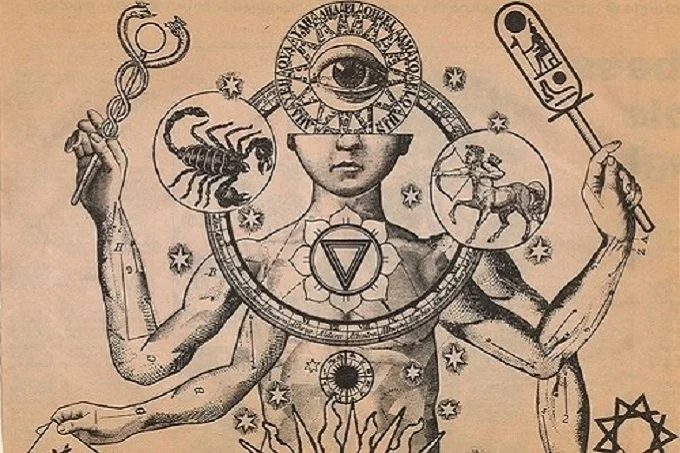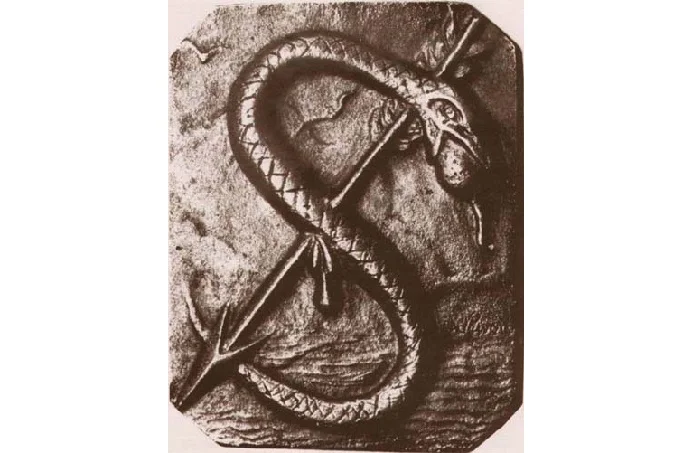Hermetic Brotherhood of Luxor: The Legacy of the Magic of Egypt

The Hermetic Brotherhood of Luxor is one of the most influential magical orders in history, essentially the first brotherhood whose members studied and practiced the occult. “H B of L” (“The Hermetic Brotherhood Of Luxor”) was founded in 1870 in England and, according to some accounts, still exists today.
Hermeticism (hermetic philosophy) – occult and magical trend that studies sacred texts, the authorship of which is attributed to a mythical figure – the sage Hermes Trismegistus, the embodiment of the ancient Egyptian god of wisdom Thoth (Hermes – the Greeks). It has an esoteric nature, studies the higher natural laws, obeying the principles of analogy and causality.
The seven principles of Hermeticism are:
Mentalism: The universe is created by the thought of One God.
Correspondence: “That which is below is analogous to that which is above, and vice versa.”
Vibration: All beings are different degrees of vibration (modification) of the One Initial.
Polarity: Everything has an opposite side, but at the same time, opposites are parts of one whole.
Rhythm: Everything in the universe is in constant motion: flowing from one facet to another, top to bottom and bottom to top.
Cause and Effect: Every phenomenon has its cause and effect; there are no coincidences, only as yet undiscovered and unexplored laws of cause and effect.
Paul: All things combine the two beginnings, the sexes, and any creation is the result of their interaction.

History and Structure of the Order
The original basis of the H B of L consisted of two circles: an outer circle and an inner circle. The inner-circle consisted of the initiated masters in addition to the founders, who solved all organizational, internal, and external issues.
To get the latest stories, install our app here.
The activities of the outer Order consisted of sending out letters to members with lessons in practical occultism (compiled mainly from the works of Pascal Beverly Randolph (a spiritualist) and Hanggrave Jennings – author of the most authoritative book on the Rosencraucers at the time).
In 1870 the adherents of the inner circle decided to expand the work and tasks of the outer Order and to transfer communication with members of the H B of L from the written to the “real”.
At the head of the formed in 1873, the Outer Circle of the Hermetic Brotherhood of Luxor was elected from among the neophytes and initiated into the mysteries of the organization man – Max Theon: a Pole, a traveler in the Middle East and Europe, a student of a Coptic magician. His successor, the Scottish philosopher Peter Davidson, became Grand Master of the Order.
In 1883, Thomas Burgon joined the Order and later writes “The Light of Egypt” – a work outlining the basis of the teachings of the Hermetic Brotherhood of Luxor, where, besides the ideological influence of Freemasons and Rosencritzers, the original Egyptian traditions are traced and strengthened. Subsequently, the ideas and principles of the H B of L would inspire the educational exploits of Papius, Kellner, Reuss, and Aleister Crowley.
The Charter of the Hermetic Brotherhood of Luxor
- “We acknowledge the eternal existence of the Great Destination of Light, the invisible center whose vibrating soul, gloriously luminous, is the life-giving breath, the life-giving principle of all that exists and ever will exist. It is from this divine hill that the invisible Power emanates, uniting the universe into a harmonious whole.”
- “We teach that from this unknowable center of the divine emanate sparks of the eternal spirit, which, after passing through its orbit, the great circle of Inevitability, are the only immortal element of the human soul. While accepting this universal brotherhood of humanity, we reject, nevertheless, the doctrine of universal quality.”
- “We have no personal preference and no one progresses in the Order without completing his assigned task and showing readiness for a more difficult initiation.”
- “Remember, we teach freely, without reticence, all worthy of our instructions.”
- “The Order provides its energies and resources for the discovery and application of secret laws and active forces in all spheres of nature to subject them to the higher will of the human soul, whose power and attributes our Order seeks to develop in order to build up an immortal individuality so that the completed spirit may say, “I AM!”
- “The members of the Order live, as far as possible, according to the canons of moral purity and brotherly love, refusing to use toxicants other than those used for medical reasons, working for the progress of all social reform, for the good of humanity.”
- “Finally, members of the Order have complete freedom of thought and judgment. In no case may a member of the Order disrespect other religious beliefs or impose their beliefs on others.”
- “Every member of the Order is bound to achieve human dignity by living as an example of purity, justice, and good will. Regardless of one’s circumstances, anyone can become a center of goodness, brilliant virtue, nobility and truth.”
Signed by the Charter of the Order personally, “M. Theon, posthumously Grand Master of the Outer Circle.”
The influence of “H B of L”
A number of historical sources indicate that the Hermetic Brotherhood of Luxor was a direct predecessor of the H.B.O. (Order of the Eastern Knights Templar).
The Order also influenced E. P. Blavatsky – the “Secret Doctrine” is said to have been written in part under the inspiration of the ideas of H B of L, and this despite the fact that Madame Blavatsky had always opposed practical teaching occultism, considering magic too dangerous an occupation.
For 17 years (1870-1887) under the influence of “H B of L” in one way or another, almost all the occult leaders of the nineteenth century, in particular, the already mentioned Peter Davidson, Max Theon, Theodore Reuss, Helena Blavatsky, Papius, and Aleister Crowley. They, in turn, transmitted the teachings through the continuators of their work into the twentieth century and into modernity.
To get the latest stories, install our app here.





How can I join the Illuminati ?